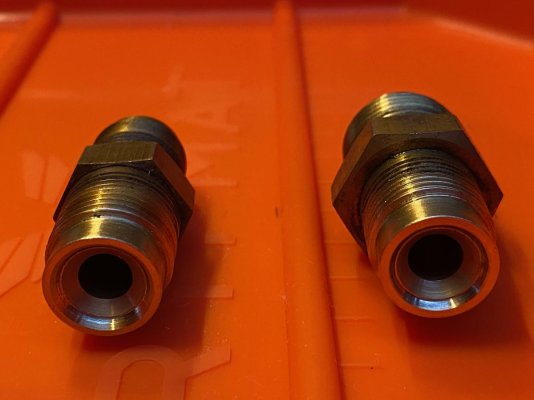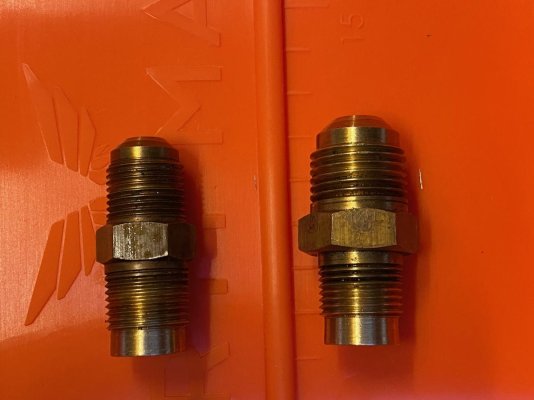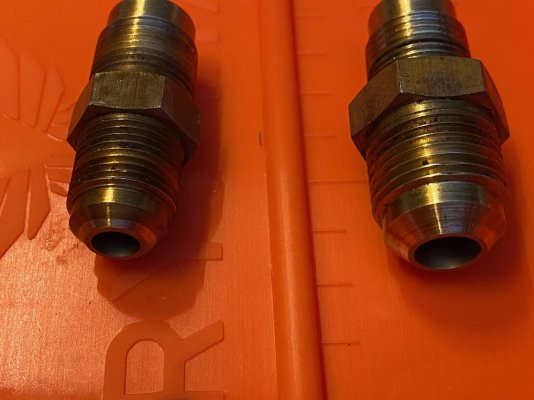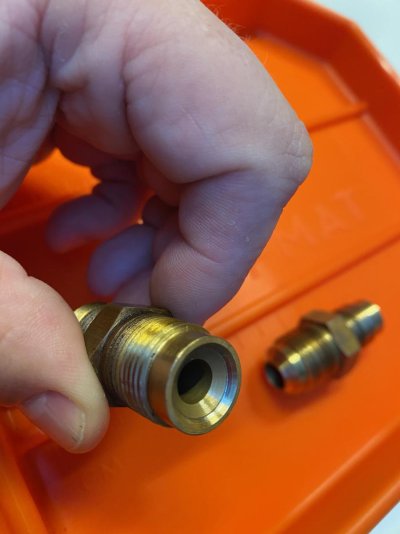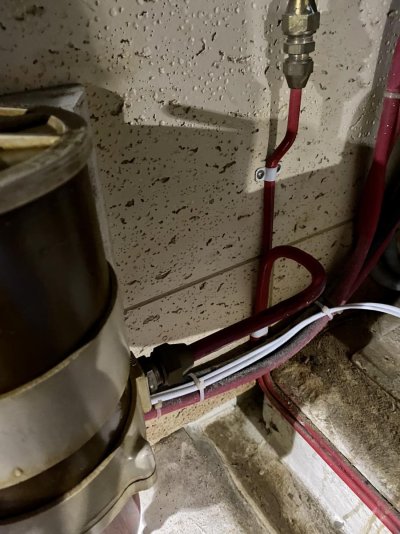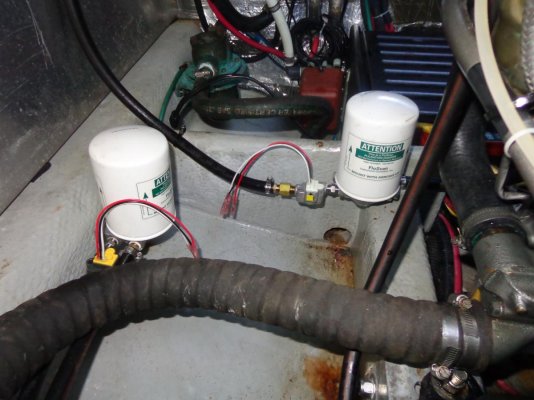stevemitchell
Guru
- Joined
- Sep 25, 2018
- Messages
- 542
- Location
- USA
- Vessel Name
- Aruna
- Vessel Make
- Kristen Yachts 50 Pilot House
I am about to install a fuel flow monitoring system and have a choice between two options that I'd like opinions on.
I have dual Volvo Penta TAMD 61A diesel engines with, of course, a fuel supply and return line for each. The system I will be installing will have a sensor in-line with both the supply and the return, otherwise it would be a pretty pointless system
The majority of my fuel system piping is hard copper up until it bridges to the engine, in which case it is using 3/8" ID rubber hose for vibration damping, etc.
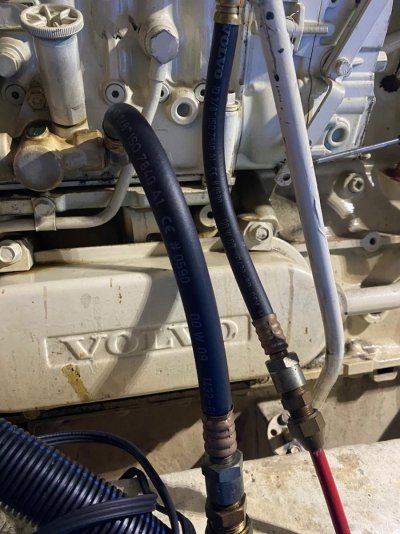
I have two choices to install the sensors:
Rubber hose - the system came with very long hose barb connectors and clamps. I could cut the hoses you see above and insert the sensors there. Positives in this approach are that it is a relatively easy install, has a minimal amount of new failure points, and doesn't require anything other than what came with the product. Cons include cutting the hose and using clamps instead of fittings which is a failure point, plus the weight of the sensors on the hose.
Fittings - I also had NPT fittings included with the product. Where the hoses hit the copper in the bottom of the picture, I could get 2x adapters for each sensor which would attach to the provided fittings and the copper piping/rubber hose. Pros with this setup is that I wouldn't have to cut the hose, would easily be able to remove the system, and they would be relatively stable. Cons include having to find four (per engine - 8 total) new fittings to convert between the hose->sensor fitting and the sensor-> copper fitting, and all of the potential leak points introduced by the new fittings.
I like the fitting idea the most but I really don't relish having to have that many connectors. I am not going to chop off the end of the copper tube and change the fittings there, or change out the hoses so they match the various ends. That is far more intrusive than cutting the hoses, which I would prefer to do instead and if I want to longer term after I've proven the install, rework the hoses and fittings down to something simpler. That's not the plan for now.
Interested in any pros/cons I've not factored in for the two approaches above.
I have dual Volvo Penta TAMD 61A diesel engines with, of course, a fuel supply and return line for each. The system I will be installing will have a sensor in-line with both the supply and the return, otherwise it would be a pretty pointless system
The majority of my fuel system piping is hard copper up until it bridges to the engine, in which case it is using 3/8" ID rubber hose for vibration damping, etc.

I have two choices to install the sensors:
Rubber hose - the system came with very long hose barb connectors and clamps. I could cut the hoses you see above and insert the sensors there. Positives in this approach are that it is a relatively easy install, has a minimal amount of new failure points, and doesn't require anything other than what came with the product. Cons include cutting the hose and using clamps instead of fittings which is a failure point, plus the weight of the sensors on the hose.
Fittings - I also had NPT fittings included with the product. Where the hoses hit the copper in the bottom of the picture, I could get 2x adapters for each sensor which would attach to the provided fittings and the copper piping/rubber hose. Pros with this setup is that I wouldn't have to cut the hose, would easily be able to remove the system, and they would be relatively stable. Cons include having to find four (per engine - 8 total) new fittings to convert between the hose->sensor fitting and the sensor-> copper fitting, and all of the potential leak points introduced by the new fittings.
I like the fitting idea the most but I really don't relish having to have that many connectors. I am not going to chop off the end of the copper tube and change the fittings there, or change out the hoses so they match the various ends. That is far more intrusive than cutting the hoses, which I would prefer to do instead and if I want to longer term after I've proven the install, rework the hoses and fittings down to something simpler. That's not the plan for now.
Interested in any pros/cons I've not factored in for the two approaches above.

